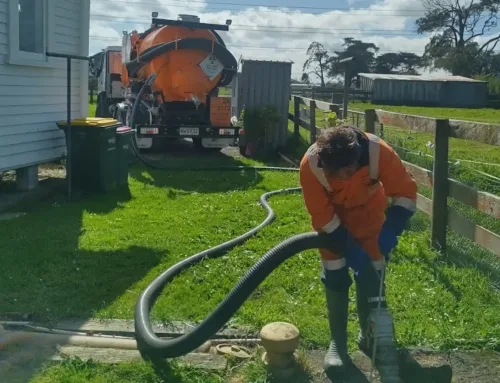The Best Strategy To Use For Reclaim Waste
The Buzz on Reclaim Waste
Table of ContentsHow Reclaim Waste can Save You Time, Stress, and Money.The Ultimate Guide To Reclaim WasteThe Reclaim Waste PDFsThe Greatest Guide To Reclaim WasteReclaim Waste Can Be Fun For Everyone
Residential sewer waste refers to the waste and products from a property septic storage tank. The proper administration and disposal of residential sewer waste need fluid waste to be moved to a sewage treatment plant where the proper methods and equipment are used to purify and dispose of waste.
Industrial waste typically consists of prospective dangers, such as flammable materials or a mix of fluid and strong waste items, and calls for a more innovative and thorough disposal procedure. The disposal of industrial waste generally involves the filtering of waste prior to transportation to ensure safe and correct disposal. Hazardous waste is produced from results and overflow of commercial processes and manufacturing.
This type of waste can not utilize the exact same sewage administration transportation or processes as septic or industrial liquids. The hazardous waste monitoring procedure requires the evaluation and testing of fluid waste prior to it undertakes the disposal process (liquid waste removal). Drainage waste is the fluid waste that originates from overflow and excess stormwater in highly inhabited locations or cities
Drainage waste can cause contamination and flooding if not dealt with effectively. Ensuring appropriate waste management can protect against calamities and lower environmental harm.
The Only Guide to Reclaim Waste
Contact PROS Services today to find out concerning our waste monitoring and disposal services and the appropriate methods to take care of the fluid waste you produce.
(https://www.goodreads.com/user/show/183557660-leon-aube)Do you understand what takes place to your water when you draw the plug, flush the bathroom or drain the washing maker? No? Well, it deserves recognizing. This supposed 'wastewater' is not just a vital source however, after therapy, will certainly be released to our land, rivers or the sea. Made use of water from commodes, showers, bathrooms, kitchen area sinks, laundries and commercial procedures is referred to as wastewater.

water utilized to cool down equipment or tidy plant and tools). Stormwater, a kind of wastewater, is overflow that flows from farming and city areas such as roof coverings, parks, yards, roads, courses and gutters right into stormwater drains, after rainfall. Stormwater moves neglected directly to local creeks or rivers, eventually getting to the sea.
More About Reclaim Waste
In Queensland, most wastewater is treated at sewage treatment plants. Wastewater is moved from domestic or commercial websites through a system of sewers and pump terminals, recognized as sewerage reticulation, to a sewage therapy plant.
The Department of Natural Resources advises local governments about handling, operating and keeping sewerage systems and treatment plants. In unsewered locations, regional federal governments might call for householders to set up individual or house sewage treatment systems to deal with residential wastewater from toilets, cooking areas, restrooms and washings. The Division of Natural Resources authorizes making use of family systems when they are verified to be efficient.
Many stormwater gets no treatment. In some brand-new neighborhoods, treatment of some stormwater to eliminate clutter, sand and crushed rock has actually started making use of gross contaminant traps. Wastewater treatment takes place in 4 stages: Eliminates solid issue. Larger solids, such as plastics and various other things incorrectly released to sewage systems, are gotten rid of when wastewater is gone through displays.
Wastewater after that streams into big storage tanks where solids work out and are eliminated as sludge. Grease and residue are skimmed from the surface. Uses tiny living microorganisms called micro-organisms to break down and get rid of remaining dissolved wastes and great fragments. Micro-organisms and wastes are integrated in the sludge. Gets rid of nitrogen and phosphorus nutrients that can trigger algal blossoms in our rivers and threaten aquatic life.
Rumored Buzz on Reclaim Waste
Nutrient elimination is not offered at all sewer therapy plants because it requires pricey specialist tools. Clear fluid effluent created after therapy may still have disease-causing micro-organisms - liquid waste disposal.

A lot of wastewater flows right into the sewerage system. Under the Act, regional federal governments administer authorizations and licences for eco pertinent activities (Ages) including wastewater launches that could have a regional influence.
Getting The Reclaim Waste To Work
Or else, samples are considered research laboratory analysis. Often several tests are needed to establish the degrees of each of the various contaminants such as oils, hefty steels and chemicals in water. Surveillance offers factual details concerning water high quality and can verify that permit conditions are being satisfied. The details gotten via tracking gives the basis Learn More Here for making water top quality decisions.